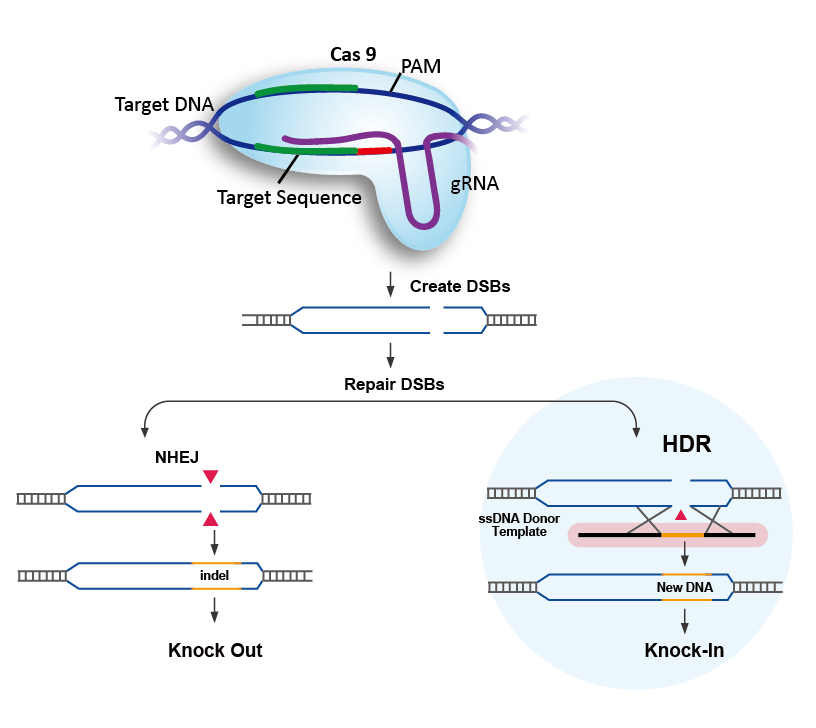Understanding CRISPR’s Gene-Editing Power
What is CRISPR-Cas9?
CRISPR-Cas9 is a revolutionary gene-editing tool that’s transforming the fields of biology and medicine. It’s a naturally occurring system found in bacteria, acting as a sort of immune defense against viruses. Essentially, it’s a highly precise molecular scissor that allows scientists to cut DNA at specific locations within a genome. This precision is what sets CRISPR apart from older gene editing techniques, offering a much more efficient and versatile approach.
The Mechanics of CRISPR-Cas9: A Simplified Explanation
Imagine a pair of scissors guided by a GPS. The “scissors” are the Cas9 enzyme, a protein that cuts DNA. The “GPS” is a guide RNA (gRNA), a short RNA molecule that’s designed to match a specific sequence of DNA. The gRNA binds to the target DNA sequence, guiding Cas9 to the precise location for cutting. Once the DNA is cut, the cell’s natural repair mechanisms kick in, allowing scientists to either disable a gene or insert a new one.

The Two Main Types of CRISPR Repair Mechanisms
There are two main pathways the cell uses to repair the double-stranded break created by Cas9. Non-homologous end joining (NHEJ) is a quick and somewhat error-prone repair method. It often results in small insertions or deletions at the cut site, effectively disrupting the gene’s function. Homology-directed repair (HDR) is a more precise method, using a provided DNA template to repair the break. This allows for the insertion of specific gene sequences, essentially rewriting the DNA code.
Beyond Gene Knockout: The Versatility of CRISPR
While disabling genes (gene knockout) is a significant application of CRISPR, its capabilities extend far beyond that. Scientists can use CRISPR to activate genes, precisely edit single base pairs (the building blocks of DNA), and even regulate gene expression – essentially controlling how much of a particular protein is produced. This level of control is invaluable for researching various diseases and developing new therapies.
CRISPR in Disease Research and Treatment
CRISPR’s precision and versatility have made it an invaluable tool in disease research. Scientists are using it to model diseases in cells and animals, identify disease-causing genes, and develop potential therapies. Clinical trials are underway for several diseases, including cancer, sickle cell anemia, and cystic fibrosis, exploring CRISPR’s ability to correct genetic defects directly in patients. The possibilities are vast and continually expanding.
Addressing Ethical Considerations and Future Directions
Despite its immense potential, CRISPR technology is not without its challenges and ethical considerations. The potential for off-target effects (unintended cuts in the genome) is a concern that researchers are actively working to address. Ethical debates surround the use of CRISPR in germline editing (modifying genes in reproductive cells), which could have heritable consequences. Ongoing research is focused on improving the accuracy and efficiency of CRISPR, as well as developing better methods for delivering the CRISPR system to target cells. The future of CRISPR holds the promise of transformative advancements in medicine and biotechnology, but careful consideration of ethical implications is crucial as the technology progresses.
CRISPR’s Impact on Agriculture and Beyond
The applications of CRISPR are not limited to human health. The technology is being used to improve crops, making them more resistant to pests, diseases, and harsh environmental conditions. This has significant implications for food security and sustainable agriculture. Moreover, CRISPR is being explored in various other fields, including industrial biotechnology, environmental remediation, and synthetic biology, showcasing its immense versatility and broad impact across scientific disciplines.
Challenges and Limitations of CRISPR Technology
While revolutionary, CRISPR isn’t a perfect solution. One significant hurdle is the potential for off-target effects, where the Cas9 enzyme cuts DNA at unintended locations. This can lead to unpredictable and potentially harmful consequences. Researchers are constantly developing strategies to minimize these off-target effects, including improved gRNA design and the development of more precise Cas9 variants. Furthermore, delivering the CRISPR system effectively to the target cells or tissues in the body can be challenging, depending on the application.
The Promise of CRISPR: A Transformative Technology
Despite the challenges, CRISPR-Cas9 represents a remarkable advancement in gene editing. Its precision, versatility, and relatively low cost have opened up unprecedented opportunities in various fields. As research continues and the technology improves, CRISPR holds the promise of revolutionizing medicine, agriculture, and countless other areas, ushering in a new era of genetic engineering with the potential to address some of humanity’s most pressing challenges. Read more about CRISPR gene editing diagrams.
